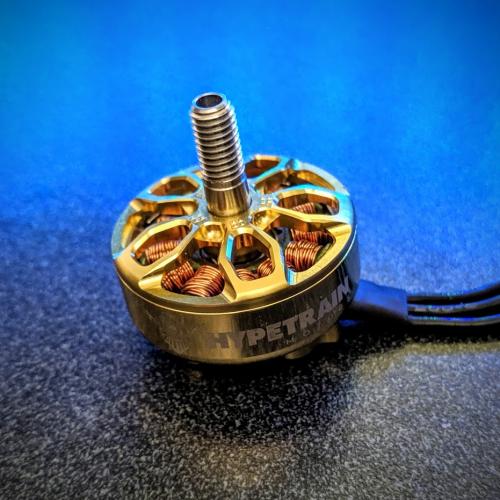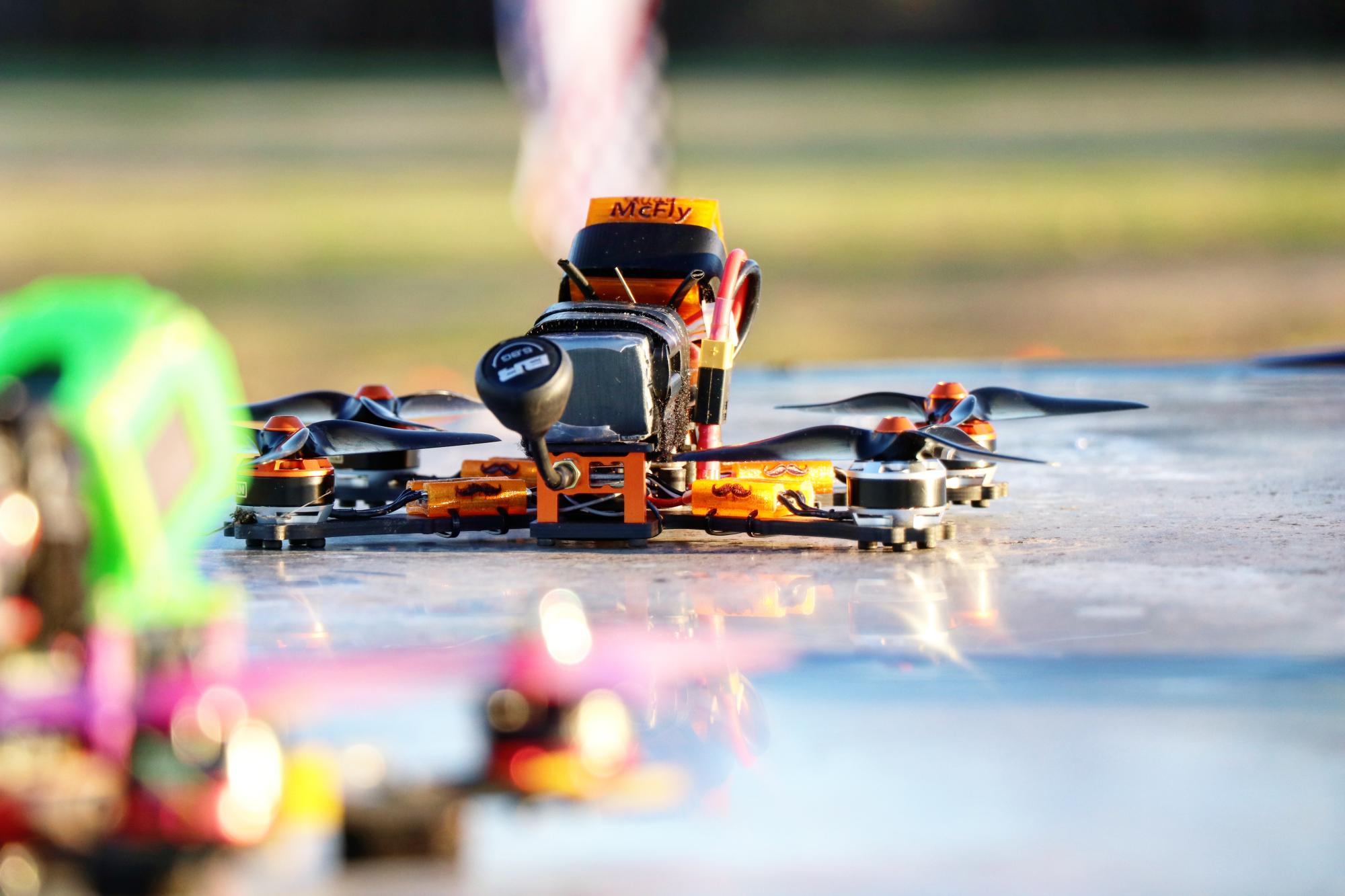The latest pilot branded motor from the Hypetrain brand
Check out the full list of motors in this series here
Summary
Published: Nov 10, 2019 by quadmcfly

| Tested KV: | 2550kv |
| Weight: | 32.2g |
| Stator W: | 23mm |
| Stator H: | 6.6mm |
Hypetrain has significantly broadened their line of motors since the initial testing we did with the first batch of
Freestyle motors. We've tested
quite a few of their pilot motors, and this latest "Cricket" motor is an excellent continuation of the line. The motor includes a number of beneficial design elements that I have not seen all combined in one place. The primary design philosophy of these motors is similar to the intial concepts that drove the first Hypetrain Freestyle motor, smoothness and efficiency without loosing too much torque, and the design decisions reflect that desired outcome. The stator height has been bumped up to 6.6mm which reflects 44 laminations of 0.15mm silicon steel. The magnets also overhang the stator height above and below a bit, which gives a decent torque boost without sacrificing too much in terms of additional weight. This motor also includes a silicon o-ring between the motor shaft and the upper bearing, which reduces lateral loading on the bearings and has a pretty decent impact on bearing life and sustained smoothess over time. The prop mount includes positive indentations on the top of the bell to help with grip, which is always something I look for in a motor. The air gap is fairly conservative and the magnets are square rather than arc magnets, both of which reduces the cogging torque of the motor, reduces the electrical noise floor, and makes the motor easier to tune for smoothness. The torque loss due to the increased air gap is made up by the increased stator size and overhung magnets. The increased air gap also has a positive impact on durability, as small deformations of the bell are less likely to cause the motor to lock up, and impact damage is less likely to damage the magnets from impact against the stators. The Kv is also bumped up a tad to 2550kv in the 4S model, which will have some impact on the lower throttle curve. While the motor we tested has a seperate bell and flux ring, the final production version of the motor has the single piece design that has become popular recently. Coming in at just over 32g it is a very reasonable weight for the stator size. The combination of factors here makes a really well balanced motor that should have a huge range of applicability and work well with a large range of props.
Results
The performance here definitely reflects the design decisions mentioned above. This isn't a thrust monster like many of the other motors on the market, it rather stives for balance and the results reflect that. That being said, it's definitely not lacking in power showing just shy of 1500g static thrust on the heaviest 5 inch props tested and easily clearing 1200g at 100% throttle with even the very light v1s 5x4x3. The wider air-gap is mitigating some of the torque advantage of the larger stator size on some of the heavier props, flattening out the peak thrust production as the prop load increases more than would be typical for a motor this size, but the motor still handles the heavier props without issues. I was hoping to see a little bit more top end out of this motor, but given the design parameters I understand the decision not go that route. Overall I'm impressed with the balance that was struck here, and this is likely to be an motor that retains relevance for quite some time.










































